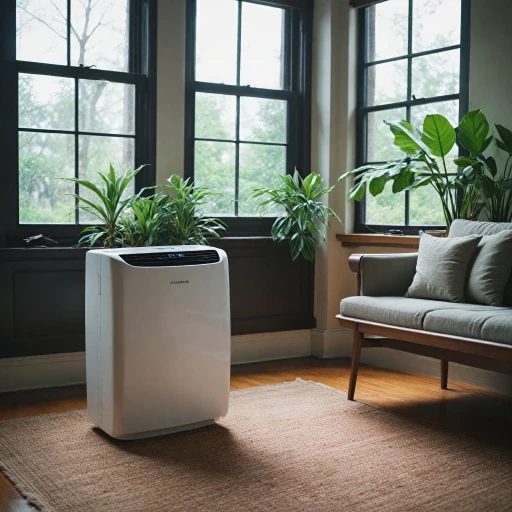What is a Mini-Split 2-Ton AC?
Understanding the Basics of a Mini-Split 2-Ton Air Conditioner
A mini-split 2-ton air conditioner, at its core, represents a ductless heat pump system designed for versatility and efficiency. This system consists primarily of two essential components: an indoor unit, often wall-mounted, and an outdoor unit. These units work in tandem to provide efficient heating and cooling across the designated zone. This setup allows for a more targeted approach, commonly referred to as a "single zone" solution, with the flexibility to expand into a multi-zone system if required.
The "2-ton" specification typically refers to the system’s cooling capacity, indicating its ability to remove heat. To put this into perspective, one ton is equivalent to 12,000 British Thermal Units (BTU) per hour, making a 2-ton unit capable of handling 24,000 BTU per hour. This measure is crucial for ensuring that the mini-split system matches the specific cooling and heating demands of the intended space.
For those considering different options in the mini-split series, it's important to assess the Seasonal Energy Efficiency Ratio (SEER), which provides insight into the system's efficiency during peak cooling seasons. A higher SEER rating can often equate to lower operating costs, making it a smart financial consideration.
To explore more about the range of air conditioners available in this category, including insights into the Aurus mini-split system, you can visit
this resource on the Aurus Mini-Split System. There, you'll find detailed information about various models and their unique benefits, including how they integrate with existing indoor and outdoor environments, the shipping policy options, and considerations on the best product for your requirements.
As homeowners seek efficient and customizable cooling solutions, understanding the capabilities and advantages of a mini-split 2-ton air conditioner is a significant step toward achieving comfort and cost-effectiveness in residential spaces.
Advantages of a Mini-Split System
Ductless Advantage and Flexibility
Mini-split air conditioners stand out due to their ductless design, which offers unique flexibility and energy efficiency. Unlike traditional central air systems, which require extensive ductwork, a mini-split consists of two main components: the indoor unit and the outdoor unit. This configuration allows for easy installation and minimal disruption to your home’s infrastructure.
The capability to support a single zone or multiple zones inside your home is a significant benefit. This means you can have different temperature settings tailored for each room, leading to optimal energy use and comfort. For instance, a mini-split system can easily cool a small room or a large area depending on the BTU capacity, while efficiently maintaining the preferred climate.
Energy Efficiency and Performance
Energy efficiency is another key advantage. Mini-split systems often feature high SEER (Seasonal Energy Efficiency Ratio) ratings, contributing to lower energy bills. This makes them an appealing option for environmentally conscious consumers seeking reduced energy consumption without compromising comfort. The integration of a heat pump allows the system to not only cool but also heat the space, providing year-round climate control.
Quiet Operation and Modern Design
Another noteworthy advantage lies in their quiet operation. With the noisiest part of the system – the compressor – residing outdoors, the indoor unit remains remarkably silent. This is particularly beneficial for maintaining a peaceful environment in noise-sensitive areas like bedrooms or offices. Moreover, these systems often come in a sleek, modern design that integrates seamlessly with contemporary décor, providing an aesthetic edge over more traditional units.
The flexibility, energy efficiency, quiet operation, and aesthetic appeal collectively position mini-split systems as a compelling option for effective indoor climate control. To delve deeper into the components of an outdoor ac unit, you might find
this resource particularly useful.
Comparing Mini-Split and Portable Air Conditioners
Evaluating the Performance and Flexibility
When deciding between a mini-split system and a portable air conditioner, it’s essential to consider their respective performance capabilities and flexibility options. A mini-split system, particularly a 2-ton unit, holds a significant advantage in terms of
BTU capacity and energy efficiency. These systems can provide substantial cooling output thanks to their higher BTU ratings, which is crucial for covering larger spaces or multiple zones within a home.
Conversely, portable air conditioners tend to boast lower BTU ratings, making them ideal for smaller areas or single-zone cooling. If portability and convenience are your primary concerns, a portable unit might be more appealing, offering quick setup and adaptability to different locations within your home.
Connectivity and Efficiency Features
A defining characteristic of mini-split systems is their
ductless design, which enables seamless integration within your living space without extensive renovations. Their energy efficiency is often measured through the
SEER (Seasonal Energy Efficiency Ratio) rating, highlighting their ability to provide excellent cooling or heating with reduced power consumption. Meanwhile, portable air conditioners may not match this level of efficiency but excel in flexibility, especially in rentals or temporary setups.
Cost and Installation Overview
From an installation standpoint, a mini-split requires professional handling, including the setting up of
indoor and outdoor units. Although this may incur higher initial costs compared to portable units, the investment can pay off in the long run due to the system's efficiency and enhanced cooling capabilities. On the other hand, portable air conditioners are typically less expensive initially and come with straightforward installation instructions, as detailed in this
comparison of portable AC units.
While both systems have distinct merits, choosing the right air conditioning solution involves weighing these factors against your specific needs, preferences, and budget considerations.
Installation Considerations for a 2-Ton Mini-Split AC
Evaluating Installation Needs for Your 2-Ton Mini-Split AC
Installing a 2-ton mini-split air conditioner requires some forethought. Here are the key considerations:
- Site Assessment: Determine the ideal locations for both the indoor and outdoor units. The outdoor unit of a mini-split system should be placed in a location with adequate ventilation and minimal obstruction, while the indoor unit, often wall-mounted, should be centrally located within the room or zone it is expected to cool or heat.
- Indoor and Outdoor Unit Placement: The distance between the indoor and outdoor units impacts efficiency. Shorter distances notably reduce energy loss, enhancing the SEER (Seasonal Energy Efficiency Ratio) performance of the system.
- Electrical Requirements: Ensure that your home's electrical system can support the air conditioner’s energy needs. A mini-split system often demands a dedicated circuit with its own breaker.
- Free Shipping and Policies: When purchasing, be mindful of shipping policies which might affect when and how the product arrives at your home. Many suppliers offer free shipping on air conditioners, but always verify the conditions.
- Professional vs. DIY Installation: While DIY installation might seem tempting due to lower upfront costs, for the optimal functioning of the ductless mini-split system, hiring a professional is usually recommended. A certified installer will not only correctly set up the unit but also ensure compliance with warranty conditions.
A meticulous installation process maximizes the performance and lifespan of your mini-split air conditioning unit, ensuring it efficiently meets the BTU needs of your designated zone. The correct installation can also significantly affect how well the system handles its role as a split heat pump during colder months.
Maintenance Tips for Longevity
Essential Tips for Maintaining Your Cooling Unit
Maintaining a 2-ton mini-split air conditioner is crucial to ensure its efficiency and longevity. These units, often admired for their energy-saving capabilities and flexibility, require consistent attention, just like any other major home appliance.
- Regularly Clean or Replace Filters:
- The indoor unit’s air filters should be periodically cleaned or replaced. Clogged or dirty filters can reduce airflow and make the system work harder than necessary, impacting efficiency.
- Inspect the Outdoor Unit:
- Check the outdoor unit for any debris or blockages. Leaves, branches, and dirt can obstruct airflow. Keep it clear to maintain optimal function.
- Check Refrigerant Levels:
- Ensuring that the refrigerant is at the correct level is crucial for efficiency. Low refrigerant levels can lead to increased energy consumption and decreased cooling capacity. A certified professional should handle this task.
- Routine Inspection of the Air Conditioner for Leaks and Damage:
- Regular inspections can help detect issues like leaks or wear and tear in the ductless system that might affect performance.
- Annual Professional Maintenance:
- It's recommended to have a professional technician conduct an annual check-up. They can address any concerns that may not be obvious without technical knowledge, such as SEER rating checks or heat pump assessments.
- Keeping Indoor and Outdoor Units Clean & Accessible:
- Maintain cleanliness around your ductless mini-split units. Dust and dirt buildup can reduce the system's cooling abilities and efficiency.
By committing to proper maintenance, these powerful and efficient cooling solutions—categorized under various series of split air and heat pump systems—can continue to serve you with the high BTU and SEER rating benefits you expect. The longevity of your investment in a single zone mini split air conditioner lies in these diligent practices.
Cost Analysis and Budgeting
Budgeting for a 2-Ton Mini-Split AC System
When considering the purchase of a 2-ton mini-split air conditioner, it is crucial to undertake a comprehensive cost analysis to ensure the investment aligns with your financial plans. Pinpointing the total cost involves accounting for the initial purchase, installation costs, and future energy consumption expenses. Here are a few points to consider:
- Initial Purchase Costs: The price for a 2-ton split AC unit can vary widely depending on the brand, BTU rating, and features like SEER (Seasonal Energy Efficiency Ratio). Generally, these ductless mini split systems are higher in initial cost than portable air conditioners but prove cost-effective over time due to their efficient zone cooling capabilities.
- Installation Expenses: Professional installation is essential for optimal performance. Though the installation cost may seem steep compared to simply plugging in a portable air conditioner, the enhanced efficiency, durability, and heat pump features of a mini split air system justify the investment. Installation might include configuring the outdoor unit, indoor unit, and ductless infrastructure, which maximizes the system’s cooling potential.
- Operating Costs: A significant advantage of a split system is its efficiency. With features such as a high BTU SEER rating and capacity for zone mini management, these systems can reduce operational costs considerably compared to traditional air conditioners. By strategically cooling specific areas, energy is not wasted, enhancing cost-efficiency.
- Long-term Savings: The single zone air handler mechanism ensures that energy is used where it’s needed most. Over time, the energy savings garnered by using a high-efficiency mini split system can substantially cut down on utility bills, offering savings that contribute to recuperating the initial investment cost.
- Shipping and Accessories: Many retailers offer free shipping on mini split products, which can slightly reduce overall costs. Additionally, factor in any preferred accessories or additional components for customized installation to meet specific home space needs.
Calculating the lifetime cost of a 2-ton mini-split AC involves a mix of upfront expenses and energy efficiency gains. This comprehensive approach to budgeting ensures your decision is both financially sound and beneficial for maintaining comfortable indoor climates year-round.

